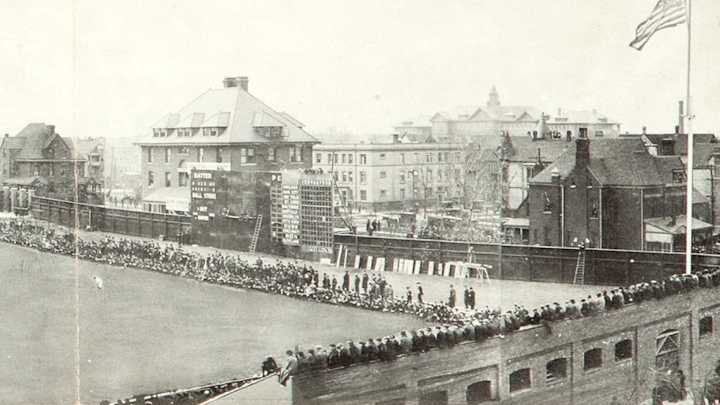This Day in Sports History: Cubs Play First Game in Weeghman Park, Later Renamed Wrigley Field

Wrigley Field is one of the oldest and most hallowed major league ballparks in baseball. The home of the Cubs, previously called Weeghman Park (1914-20) and Cubs Park (1920-26), has witnessed countless moments of joy and heartbreak experienced by the club since it moved in in 1916.
Originally known as Weeghman Park, the 14,000-seat stadium was constructed in 1914 on a plot of land previously occupied by a seminary. The Federals (of the Federal League) inhabited the new ballpark, which was named after owner Charles Weeghman, for two years before the league folded. Weeghman then led a group that purchased the Cubs and brought them to Chicago's North Side.
On April 20, 1916, the Cubs made their Weeghman Park debut against the Cincinnati Reds. Prior to the game, a parade stretched from Grant Park downtown to the stadium, complete with brass bands and cars adorned with banners. Members of the Reds and Cubs, local politicians and Illinois Gov. Edward F. Dunne participated. Fireworks went off in center field when the American flag was raised, and a Lincoln Park zoo employee led a bear cub onto the field to do tricks at home plate.
The Cubs' home opener turned out to be a nail biter. Claude Hendrix took the mound for Chicago and gave up a single to Red Killefer on the first pitch of the game. Cincinnati went on to take an early 2–0 lead, but the Cubs answered by tying the game in the bottom of the first. Chicago scored again in the fourth when William Fischer hit a double with two out and later scored on Steve Yerkes's single.
In the top of the eighth, the Reds led 5–3 before adding an insurance run to seemingly ruin the Cubs' inaugural game at their new ballpark. However, Chicago wasn't out of it yet, and Heinie Zimmerman hit a game-tying double in the ninth to keep the team alive. With one out in the 11th, the Cubs' Cy Williams doubled to right field, and Zimmerman was intentionally walked before Williams scored the game-winning run off Vic Saier's line-drive single.
Since then, the ballpark has undergone several rounds of renovations but remains one of baseball's most cherished spots. In 1920, chewing gum manufacturer William Wrigley Jr. bought the franchise and renamed the stadium Cubs Park. Six years later, its name changed to Wrigley Field in honor of its owner. The ballpark's signature ivy on the outfield walls, bleachers and hand-operated scoreboard were added in 1937, and the Cubs started playing home night games after installing lights in 1988.
